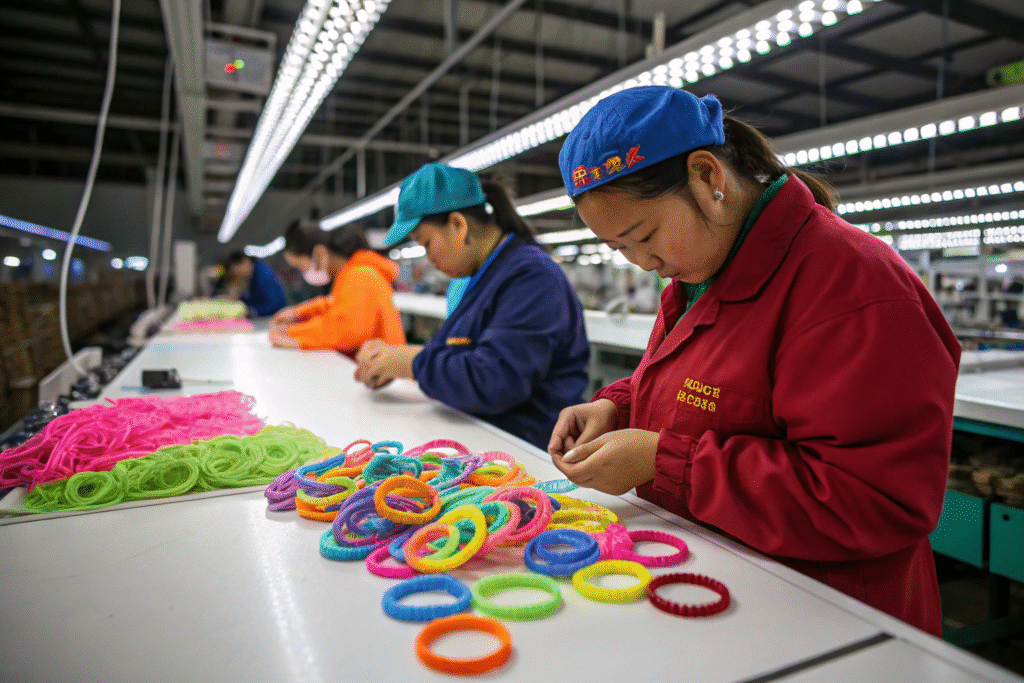Factories face growing pressure from parents and daycare operators to provide safe and durable hair accessories for children. A small defect such as a insecure bead or harmful material can quickly destroy trust in both the daycare and the supplier. Safety has therefore become the top priority in children’s accessory manufacturing.
Factories ensure child-safe hair ties by combining strict material testing, thoughtful product design, and compliance with international standards. They conduct inspections, durability tests, and certification procedures to guarantee that each product is free from toxins, choking hazards, and entanglement risks.
For parents, this means peace of mind. For buyers, it reduces liability and increases sourcing confidence. For us as manufacturers, it safeguards reputation and market access.
What Safety Standards Apply to Kids’ Hair Ties?
Global rules guide how factories make children’s hair accessories safe. In the U.S., the Consumer Product Safety Improvement Act (CPSIA) requires third-party testing and a Children’s Product Certificate (CPC). In Europe, EN 71 standards set limits on toxic substances and mechanical safety. Both demand durable products free of harmful chemicals and choking hazards.
Factories follow standards like CPSIA and EN 71 to ensure daycare-safe hair ties. These cover toxic chemical checks, durability, and proper labeling. Certified compliance allows products to enter regulated markets.
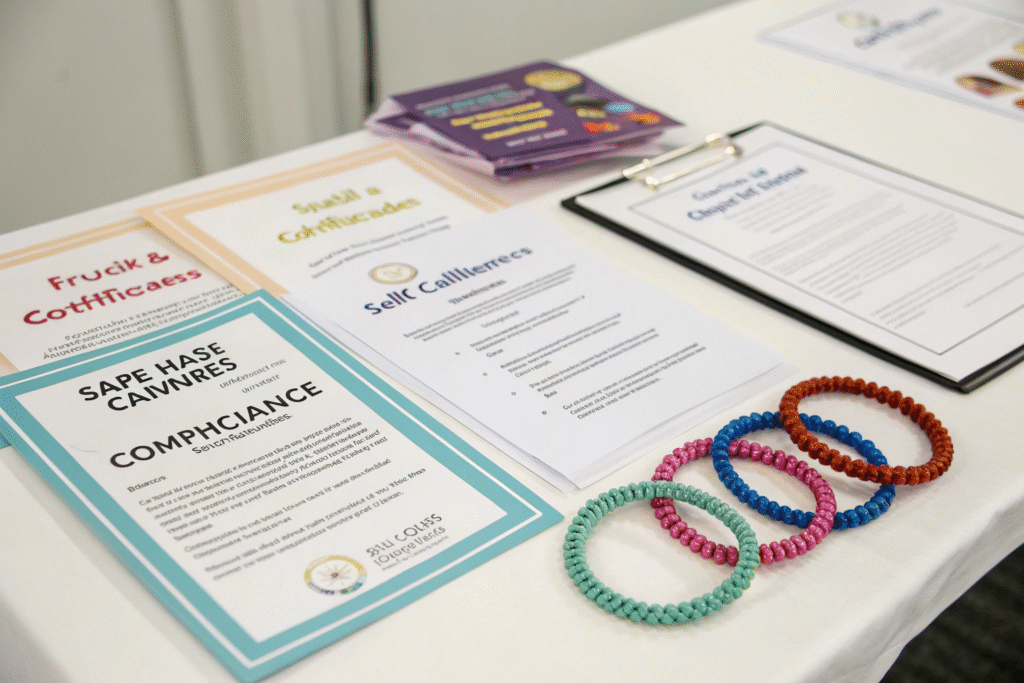
Daycare buyers often request proof of certification. For CPSIA, this means documented test results and traceability labels. EN 71 requires testing for both harmful substances and physical safety. Together, they set a global benchmark for child-safe hair ties.
What does CPSIA require from factories?
CPSIA requires third-party lab testing before shipping products to the U.S. A Children’s Product Certificate confirms compliance, and labels must include age-grade guidance and traceability. You can read more at the U.S. CPSC website and in this compliance overview.
How does EN 71 protect children in Europe?
EN 71 ensures safety for products marketed to children. EN 71-3 checks for chemical limits, while EN 71-1 addresses physical and mechanical risks. Resources like SGS guidelines and NRA child safety guide explain how factories meet these requirements.
How Do Factories Test Materials for Child Safety?
The first step is checking raw materials. Rubber, elastic, and fabric are tested for lead, phthalates, cadmium, and azo dyes, which can harm children’s health. Factories also simulate daily use with stress tests—stretching, twisting, and washing hair ties to confirm they won’t snap or shed parts.
Factories test for harmful substances and perform durability checks to ensure hair ties are safe and long-lasting. Accredited labs provide test reports before products are shipped.
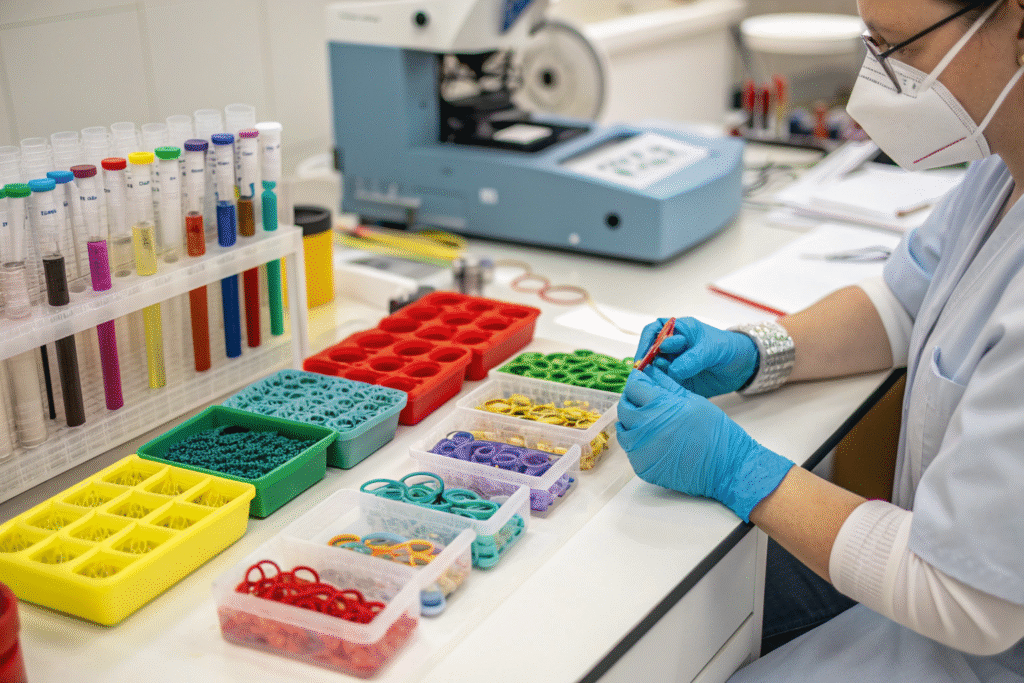
These processes prevent skin irritation, allergic reactions, and breakage that could lead to choking hazards. Buyers gain confidence when provided with laboratory results from SGS, Intertek, or Bureau Veritas.
What chemicals are restricted in children’s hair ties?
Children’s products must be free from lead, cadmium, phthalates, and azo dyes. These substances are banned because of risks like poisoning and hormonal disruption. See Intertek safety testing and Bureau Veritas chemical testing for details.
How do factories test durability?
Hair ties go through pull tests, wash cycles, and elasticity checks. These tests show if the product can survive daily use without failing. Learn more at ASTM standards and TÜV SÜD testing.
How Do Factories Design Hair Ties to Avoid Hazards?
Design choices are crucial. Factories avoid beads, sequins, or charms that could detach. Instead, they use secure embroidery, bonded prints, or reinforced bows. Edges are softened to prevent scratches, and elastic sizes are adjusted to ensure comfort without being too tight.
Factories design hair ties with no detachable parts, reinforced stitching, and smooth finishes to reduce risks of choking, scratching, or strangulation.
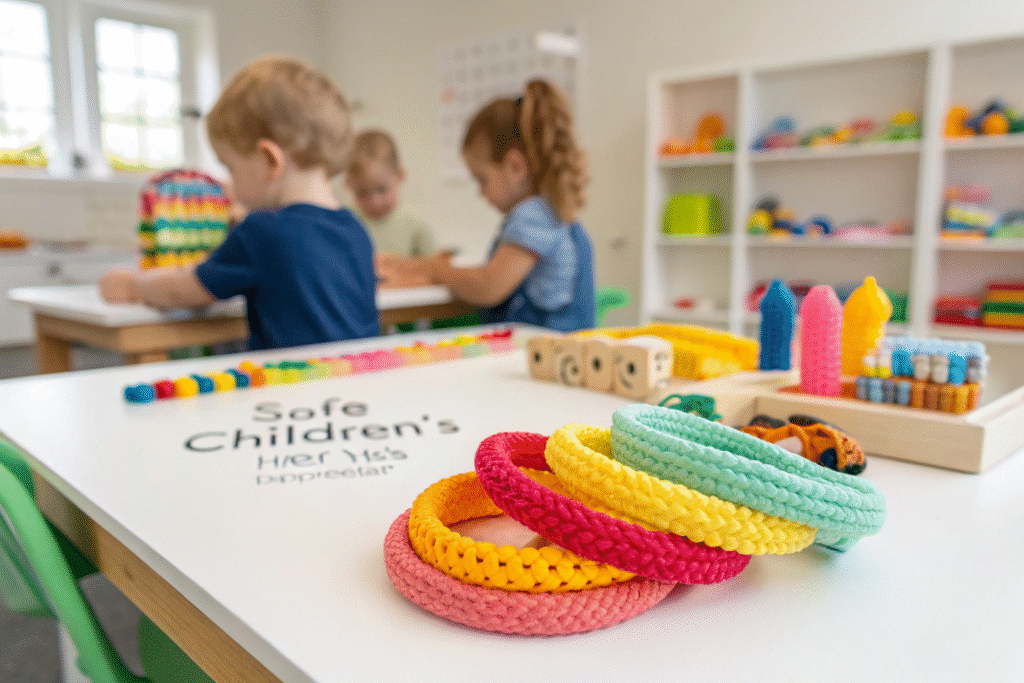
Daycare-safe designs focus on durability and simplicity. Reinforced stitches such as bar tacks and lock seams ensure decorations do not fall off even after repeated washing or pulling by active children.
Why should factories avoid small parts?
Small parts like beads and rhinestones are choking hazards. Safe designs replace them with sewn decorations or heat-bonded prints. Learn more at CPSC choking hazard rules and Child Safe Europe guidelines.
How does reinforced stitching improve safety?
Reinforced seams and bar tacks prevent decorations from falling off. This ensures long-term safety, even in daycare use. See sewing guidelines and ISO textile durability standards.
Why Is Ongoing Quality Control Important?
Safe design and materials mean little without consistent production standards. Factories use in-line inspections during manufacturing and final product checks before shipping. Any loose threads or weak attachments are flagged immediately. They also keep compliance documents like CPCs and test reports for buyer audits.
Factories maintain safety through continuous inspections, final checks, and strict documentation to guarantee that every batch meets daycare standards.
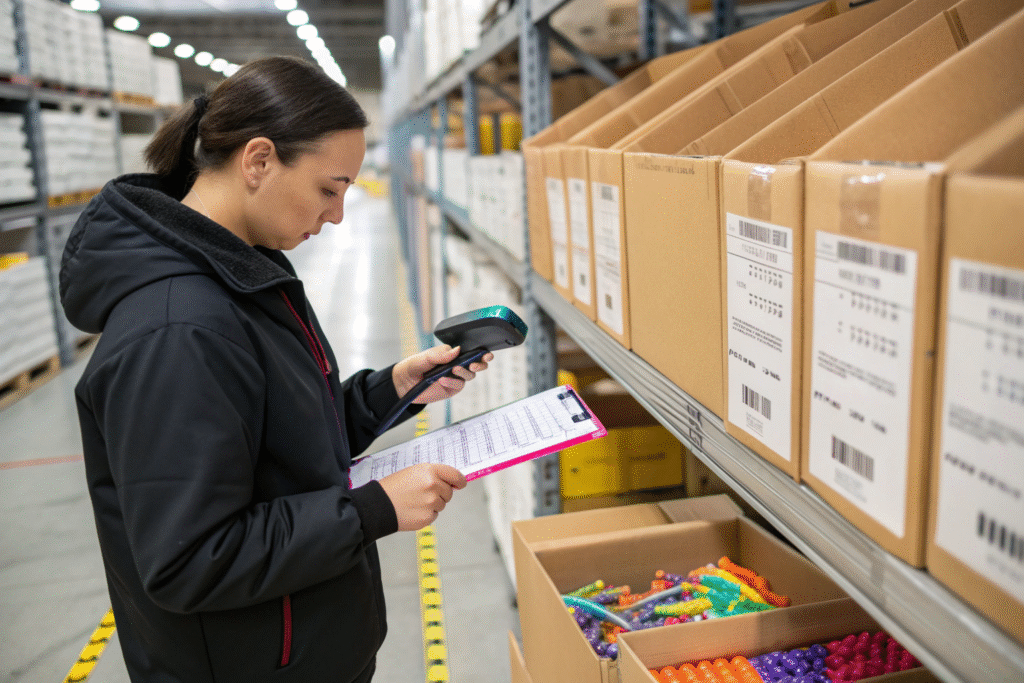
This system builds trust and reduces recalls or legal risks. Buyers can trace each product back to its test reports and batch records, ensuring accountability from factory floor to daycare use.
How do in-line inspections prevent risks?
Inspections during production catch problems before they grow. This includes checking for loose threads, uneven stitches, or unsafe attachments. See QIMA inspection guide and SGS inspection services.
Why is documentation important for compliance?
Factories must keep Certificates of Compliance and batch reports for audits. This helps buyers prove safety and trace any issues. Learn more from CPSC tracking labels and EU compliance rules.
Conclusion
Factories make daycare-safe hair ties by combining certified standards, safe materials, smart design, and ongoing quality control. These practices protect children, reassure parents, and give buyers reliable products for high-risk environments like daycares.
If you are looking to develop your own line of safe and fashionable hair ties, our company Shanghai Fumao can help. We specialize in producing child-safe hair accessories at scale with international certifications. Contact our Business Director Elaine at elaine@fumaoclothing.com to start your project today.

